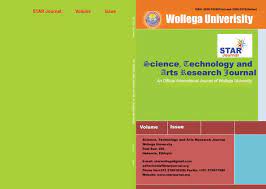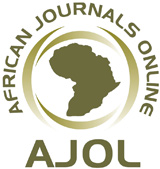Aligning Continuous Professional Development with Teachers’ Needs: Language Competence and Delivery Mode Preferences in Focus
DOI:
https://doi.org/10.20372/star.V14.i2.13Keywords:
Competence, Delivery Mode, Need, Preferences, Continuous Professional Developmt SkillsentAbstract
This study aimed to analyze areas of language skills teachers need continuous professional development to address and delivery mode preferences. A sequential mixed data collection method was employed to carry out this study. The study was conducted in Ethiopia, West Shewa Zone, Ambo Administrative Town, and the Ambo district. 32 teachers were selected using a simple random sampling technique for the study. Questionnaire, observation, and interview were employed for data collection. Quantitative data were analyzed using SPSS Version 25, while qualitative responses were examined through thematic analysis. The study results reveal that vocabulary, grammar, and speaking are most needed for language skills. The study indicates teachers showed a high degree of preference for both in-person and online CPD delivery modes. It was also revealed that urban teachers need in-person training, whereas rural teachers need online professional development. On the other hand, teaching experience had no significant influence on teachers’ preferences for CPD delivery format. Ultimately, the study recommends that designing CPD programs based on teachers' specific needs and incorporating blended delivery modes can significantly enhance the quality of English teaching in Ethiopia.
Downloads
Metrics
References
Ayalew, Y., & Hailemariam, M. (2024). The implementation of public relations practices in the case of the Amhara region tourism and culture bureau. Ethiopian Journal of Language, Culture and Communication, 9(2), 231-251. https://www.ajol.info/index.php/ejlcc/article/view/283777
Creswell, J. W., & Plano Clark, V. L. (2007). Choosing mixed methods design. In Designing and conducting mixed methods research (pp. 53–106). Sage Publications. https://psycnet.apa.org/record/2006-11884 -000
Desimone, L. M., & Garet, M. S. (2015). Best Practices in Teachers ’ Professional Development in the United States. 7(3), 252–263.https://asccmeet.weebly.com/ uploads/2/5/0/1/25011525/desimone_garet__2015__-_professional_development. pdf
Guskey, T. R. (2002). Professional development and teacher change. Teachers and Teaching: Theory and Practice, 8(3), 381–391. https://doi.org/10.1080/135406002100000512
Johns, L. A., & Sosibo, Z. C. (2019). Constraints in the implementation of continuing professional teacher development policy in the Western Cape. South African Journal of Higher Education, 33(5), 130–145. https://doi.org/10.20853/33-5-3589
Mekie, M. E., & Gezahegn, G. (2023). EFL teachers' continuous professional development: Reflections and target needs. Journal of Pedagogical Sociology and Psychology, 5(3), 247-262.https://doi.org/10.33902/jpsp.202320 247
Mijena, E. (2013). The need for professional growth of ELT teachers in Ethiopia. Science, Technology and Arts Research Journal, 2(3), 160. https://doi.org/10.4314/star.v2i3.98764
MoE. (2018). Ethiopian education development roadmap (2018–2030): An integrated executive summary (pp. 1–101). Education Strategy Center. https://5y1.org/download/f80344e9046 fa0346fc402c29dd76288.pdf
Ramia, N., Díaz, K., Salcedo, M.G., Merino, I., Castellanos, I., & Cueva, L. (2023). Innovations in Online Teacher Professional Development in Latin America. In: Aguilar-Rivera, N., Borsari, B., R. B. de Brito, P., Andrade Guerra, B. (eds) SDGs in the Americas and Caribbean Region. Implementing the UN Sustainable Development Goals – Regional Perspectives. Springer, Cham. https://doi.org/10.1007/978 -3-031-16017-2_101
Richards, J. C., & Renandya, W. A. (2018). Methodology in language teaching: An anthology of current practice. Cambridge University Press. https://haybusaklib.am/wp-content/uploads/2021/08/Methodology-in-La nguage-Teaching-Jack-C.-Richards-Willy-A.-Renandya.pdf
Schmitt, N. (2014). Size and depth of vocabulary knowledge: What the research shows. Language Learning, 64(4), 913–951. https://link.springer.com/chapter/10.1007/978-3-030-79143-8_88?fromPay wallRec =true
Shulman, L. S. (1987). Knowledge and teaching: Foundations of the new reform. Harvard Educational Review, 57(1), 1–22. https://doi.org/10.17763/haer.57.1.j463w79r56455411
Stadtländer, C. T. K.-H. (2009). Qualitative, Quantitative, and Mixed-Methods Research. Microbe Magazine, 4(11), 485–485. https://doi.org/10.1128/microbe.4.485.1
Sudarwati, E., Eudia, G., Aziz, E. A., & Shaqr, S. A. (2007). An English course for senior high school students in year XI. Erlangga. http://eprints.ums.ac.id/id/eprint/24802
Tessema, S., & Mohammed, F. (2022). Exploring EFL teachers’ perception and practices of listening skill instruction: Evidence from Ethiopia. Journal of Language Teaching and Research, 13(4), 673–681. https://doi.org/10.17507/jltr.1304.02
Tirussew, T., Amare, A., Oumer, J., & W/hanna, T. A. (2018). Ethiopian education development roadmap (2018–30). Ministry of Education. https://planipolis.ielp.unesco.org.files,resoursepdf
UNESCO. (2020). Global education monitoring report: Inclusion and education – All means all. https://unesdoc.unesco.org/ark:/48223/ pf0000373718
Vandergrift, L., & Goh, C. C. M. (2021). Teaching and learning second language listening: Metacognition in action. Routledge. https://doi.org/a 10.4324/9780429287749
Walker, R. (2020). The nativeness principle. Blogpost. https://englishglobalcom.wordpress.com/2020/09/21/the-nativeness-principle/
Westgate, D., & Hughes, M. (2013). Speaking and listening across the primary curriculum: an entry to improved learning and a focus for CPD. Education 3-13, 43(5), 565–578. https://doi.org/10.1080/03004279.2013.837945
Woldemariam, B., & Hailu, W. (2023). Exploring EFL teachers’ perceptions and classroom practices in teaching vocabulary to children: The case of lower-grade English teachers in Ethiopia. Education 3–13: International Journal of Primary, Elementary and Early Years Education. Advance online publication. https://doi.org/10.1080/03004279.2023.2205435
Downloads
Published
How to Cite
License
Copyright (c) 2025 Journal of Science, Technology and Arts Research

This work is licensed under a Creative Commons Attribution-NonCommercial 4.0 International License.
STAR © 2023 Copyright; All rights reserved





